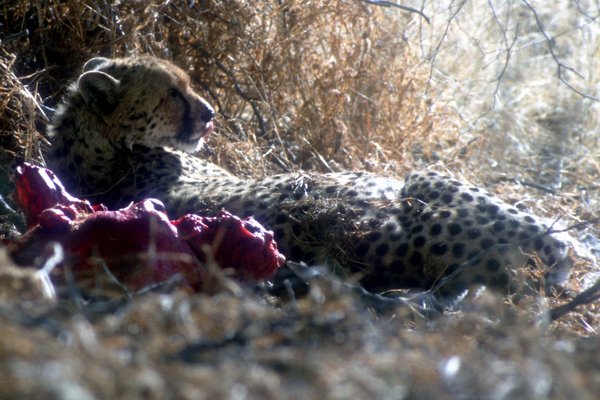South Africa
ǂKhomani Cultural Landscape
The ǂKhomani Cultural Landscape is a vast desert area associated with ǂKhomani San culture since the Stone Age.
The area amongst the sand dunes of the Kalahari Gemsbok National Park lies in a hostile, dry environment plagued by predators. It was used by the indigenous ǂKhomani San hunter-gatherers for water and (medicinal) plants. The tangible remains include archeological sites and graves.
Community Perspective: reviewers regret that natural aspects weren’t part of the nomination, as Kalahari Gemsbok (the South African part of Kgalagadi Transfrontier Park) is a great park. Walter and Solivagant were relatively early visitors (1997 and 1998 respectively), when the access roads were still mostly gravel and the cultural aspects were not yet much emphasized. Tamas recently deep-dived into the cultural aspects on a 2-day tour.
Site Info
Official Information
- Full Name
- ǂKhomani Cultural Landscape (ID: 1545)
- Country
- South Africa
- Status
-
Inscribed 2017
Site history
History of ǂKhomani Cultural Landscape
- 2017: Advisory Body overruled
- ICOMOS advised Deferral, overturned after amendment of Angola
- 2017: Inscribed
- Inscribed
- Type
- Cultural
- Criteria
- iv
- v
- vi
Links
- UNESCO
- whc.unesco.org
- Official
-
- sanparks.org — Part of Kgalagadi Transfrontier Park
- Related
-
- khomanisan.com — About the Khomani San
- magazine.africageographic.com — Ae!Hai Heritage Park as South Africa’s first international dark-sky protected area
All Links
UNESCO.org
- whc.unesco.org — whc.unesco.org/
Official Website
- sanparks.org — Part of Kgalagadi Transfrontier Park
Related Resources
- khomanisan.com — About the Khomani San
- magazine.africageographic.com — Ae!Hai Heritage Park as South Africa’s first international dark-sky protected area
Community Information
- Community Category
- Cultural Landscape: Associative
Travel Information
Recent Connections
-
Late Pleistocene
Until relatively recently the nominated… -
Cultural WHS set within an IUCN recognised protected area
Kalahari Gemsbok National Park (IUCN ca… -
San
"The landscape includes landmarks of th…
Connections of ǂKhomani Cultural Landscape
- Geography
-
-
On National Border
with Namibia and Botswana -
Desert Cultural Landscapes
-
- Trivia
-
-
Largest cultural WHS
959,100 ha (#2) -
Minority communities
Khomani San
-
- Ecology
- Human Activity
-
-
Hunter-gatherers
The ǂKhomani Cultural Landscape is uniquely expressive of the hunting and gathering way of life practised by the ancestors of all modern human beings; so are the simple, yet highly sophisticated technologies which they used to exploit scarce resources such as water, find plant foods in an extremely hostile environment, and deal with natural phenomena such as drought and predators. (official description) -
Indigenous groups expelled
"In 1931, the last stronghold of the San in South Africa was gazetted as the Kalahari Gemsbok National Park, and whilst park management initially allowed the San to continue living in the park, they were soon evicted for good." (see link) -
San
"The landscape includes landmarks of the history, migration, livelihoods, memory and resources of the ǂKhomani and related San people" (OUV)
-
- WHS on Other Lists
-
-
Cultural WHS set within an IUCN recognised protected area
Kalahari Gemsbok National Park (IUCN cat ii)
-
- Timeline
-
-
Late Pleistocene
Until relatively recently the nominated cultural landscape was the domain of hunter-gatherers belonging to the linguistic group of the |Xam, which is said to have emerged around 20,000 years ago.
-
News
No news.
Recent Visitors
- Thomas van der Walt
- Zoë Sheng
- Kbecq
- Svein Elias
- Randi Thomsen
- Bernard Joseph Esposo Guerrero
- Szucs Tamas
Visitors of ǂKhomani Cultural Landscape
Community Reviews
Show full reviews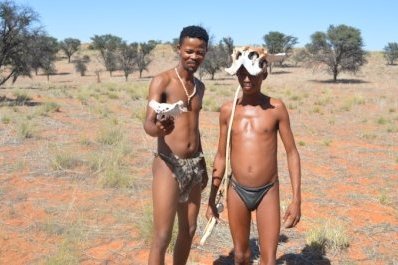
Most rewivers complained about the missed cultural element of the site, so while planning my visit to South Africa I deliberately wanted to find some kind of clue how not to miss it. Finally I found a website - www.khomanisan.com - where - though there is absolutely no reference to the World Heritage status, I assumed, I can fulfil my desire. The site is maintained by the bushman council, so if anybody knows what the sam cultural landscape is about, they are surely the ones. The comunication with the admins war painstaikingly slow. After some weeks I got an aswer from the tour operator appointed by the council, Vinkie von der Westhiuzen, an email, that, yes, she is the one who is in charge and once she would send me some more information. It was in late November, and in January I got it. The two days cultural tour, though somewhat pricey, seemed to be interesting, so we booked it. What we got was really interesting - though in a certain sense somewhat patchy. We had two local guys - Elivs and Philemon - with us who tought us how to use bow and arrow (we were better, but even though did miss the coke can), how to recognise the excrement of different animals in the bush, which are th the plants with healing powers etc. This was real fun. We have also seen some tribal dancing around the fire with some stories told. The choreography was quite simple - …
Keep reading 0 comments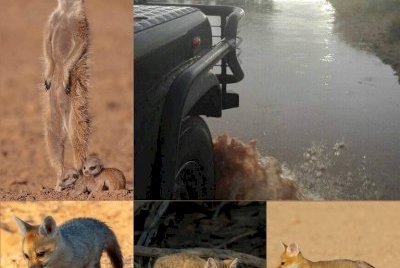
ǂHelloǂ
This park seems quite average at best, no elephants means "oh my god why would anyone want to come here if no elephants", right? Well I have never been to Kruger and don't really plan on it because at Kgalagadi have ticked off soooo many animal species in just one day going straight through the South African part. But wait, there's more! You can go to all three countries in one visit if you go to Botswana first, then out into Namibia (it doesn't have any of the park and correct, the Botswana part is not a UNESCO site). Well, the cultural aspect of the park is totally lost on me because in 7 days inside the park I didn't come across a single San person, or Bushmen as the Botswana guide calls them, and he even showed me 'Gods Must Be Crazy' to entertain me on the trip! So unfortunately this isn't a site I can say it's possible to appreciate the meaning of the inscription. I have a feeling that the San people are really into having visitors anyway.
So I was with guide and 4x4, 2 extra tires that were barely enough as we went through the wet roads to look for animals. The dry days gave us plenty including lazy lions, a cape cobra, but the wet days obviously very little. It was fun, I think it is a great park and I met lovely people - but then again this isn't why …
Keep reading 0 comments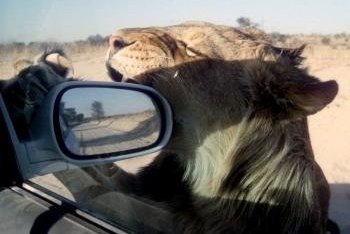
Walter’s comment in his recent review that “The !Xam Khomani Heartland corresponds in fact to the Kalahari Gemsbok National Park” has come indeed as a very pleasant surprise to me - even if he also indicates that the Nomination has been recommended for “deferral” this year!! This because we had a very memorable visit to the park just 1 year after Walter’s, way back in Aug 1998, and it therefore gives me the “right” to post my favourite Lion Photo taken inside the Park in the South African sector. I had just not previously realised that this Cultural nomination encompassed the entire South African part of the Kgalagadi Transfrontier Park. I have re-read the UNESCO Web site T List entry and it is very opaque about the boundaries, referring to areas south and north of Upington and “restitution of land to the south of the Kgalagadi Trans-frontier Park, the original home of the community, and restoration of certain land use rights within the Park” – hardly evidence of a nomination based entirely on the Park. Indeed we discussed the regrettable non inclusion of Kgalagadi park on the List on the Forum earlier this year. However, the ICOMOS evaluation in this year’s WHC papers includes a map which confirms that the Nomination does indeed follow the S African Park boundaries.
We had picked up a rentacar in Capetown and driven all the way up to Etosha in Namibia. Our route back was scheduled to take in the Namaquland flowers but, given …
Keep reading 0 comments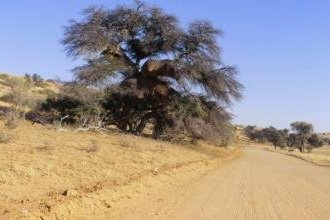
The ǂKhomani Cultural Landscape, otherwise known as the The !Xam Khomani Heartland corresponds in fact to the Kalahari Gemsbok National Park. To add some more confusion, together with the Bostwana Gemsbok National Parks, if forms the African Kgalagadi Transfrontier Park.
South Africa justifies the OUV with the association of the red dunes of the parks and the ǂKhomani and related San people, who descend directly from the ancient population that inhabited southern Africa around 150,000 years ago.
Back in 1997, as I was discovering South Africa, driving from Pertoria to Namibia, I decided to go to the Kalahari Gemsbok Park, is the search of the San people territory. I had been fascinated by a 1980 movie, The Gods must be crazy, telling the story of an isolated San tribe which is disturbed by a glass Coca-Cola bottle fallen from a plane.
As often, getting there is half the fun. The entrance to the park is now a 2 and a half drive from Upington, the nearest « town ». The new road to the entrance is now tared, but back then it was a 4 and a half hours drive on a gravel road. Driving from Pretoria is a long 10 hours drive (equal time from Cape Town), which make this area one of the remotest in South Africa.
Nature is here at its best. Far less travelled than Kruger Park, you get the chance to have all kind of different animal for yourself. I saw cheetahs from very close, …
Keep reading 0 comments